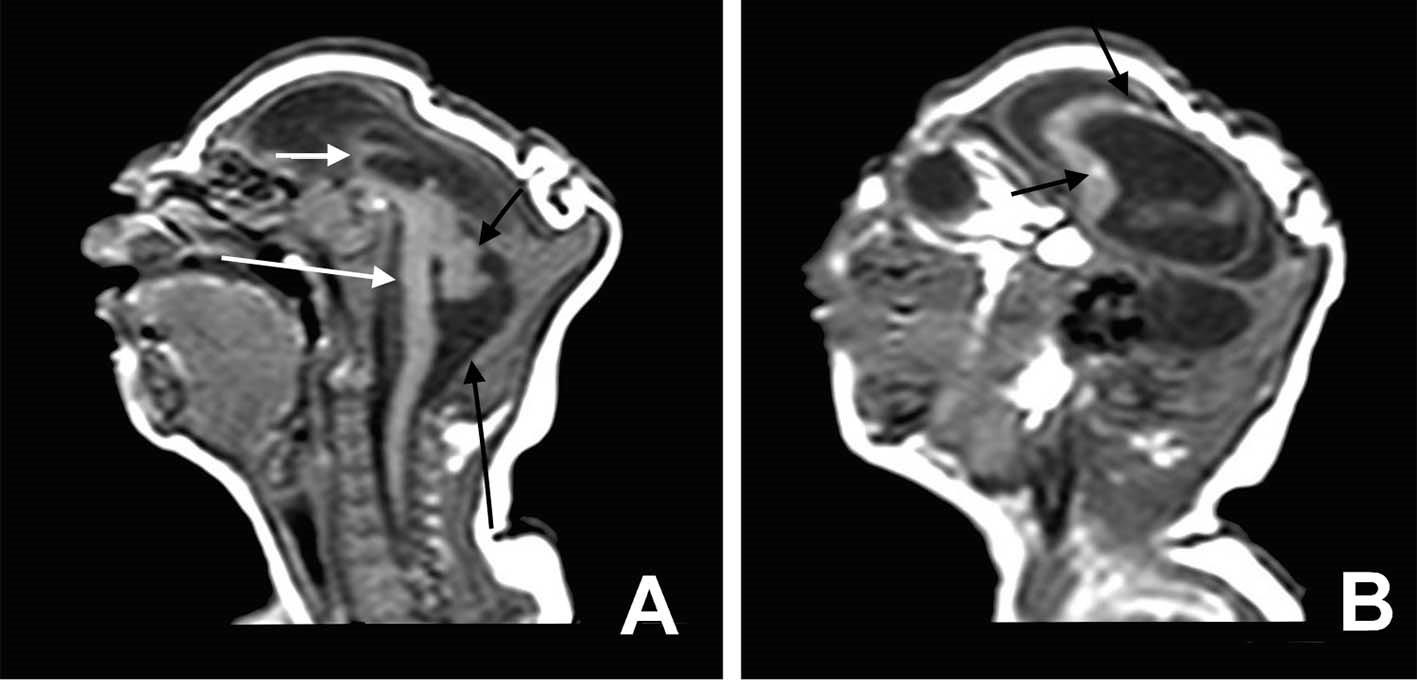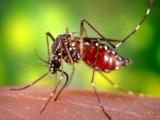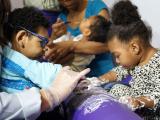After a formal review of the evidence so far, experts at the US Centers for Disease Control and Prevention (CDC) today announced they have concluded that Zika virus infection causes microcephaly, which its director, Tom Frieden, MD, MPH, said marks a turning point in the investigation into the virus.
At a media briefing today, CDC officials said they based their conclusion on two sets of criteria for gauging teratogens in birth defects: Shepards's criteria and the Bradford Hill criteria. The peer-reviewed analysis, crafted by CDC experts on reproductive health and congenital disorders, appears today in an early online edition of the New England Journal of Medicine (NEJM).
As if to underscore the CDC's announcement, Brazilian researchers today published detailed radiographic findings of 23 microcephalic babies, which spell out severe manifestations such as brain calcification, a possible sign of brain cell destruction.
CDC: Evidence met accepted criteria
Frieden said studies are still needed to gauge the broader range of birth defects that stem from Zika infection, "but there's no longer any doubt that Zika causes microcephaly."
He added that the CDC based its conclusion about the condition, characterized by small heads and brain abnormalities, on a careful review of all available information, noting that no single finding triggered its decision.
"It's like putting together pieces of a puzzle with each new data point," he said, adding that answering other questions such as the range of birth defects and the level of risk could take years.
Today's announcement doesn't change the CDC's guidance for travelers, pregnant women, and those considering getting pregnant, he said. "But it does reiterate the urgency of our response."
The CDC's announcement today comes just a few days after the World Health Organization made a similar announcement.
Sonja Rasmussen, MD, MS, lead author of the report and editor-in-chief of the CDC's Morbidity and Mortality Weekly Report, said the main findings from an analysis based on the Shepherd criteria were that Zika exposure occurs at a critical time during pregnancy, especially during the first trimester or early in the second. She added that the Zika-linked microcephaly cases show a consistent pattern of defects, and that rare type of exposure results in a rare type of birth defect: an unusually severe form of microcephaly.
Rasmussen also said the link between Zika virus and microcephaly is biologically plausible, based on pathologic findings so far.
Settling on the Zika-microcephaly conclusion allows the CDC to focus on a long list of other urgent questions, especially ones that would help define a Zika-infected pregnant woman's risk of delivering a baby with congenital abnormalities, Rasmussen said. Current estimates vary widely, from 1% to nearly 30%.
The systematic review includes all the information collected since the association was first noted in October through last weekend, as well as preliminary information on microcephaly cases reported in Colombia, which was struck by the virus after Brazil.
BMJ cases detail severe malformations
Meanwhile, Brazilian researchers from Recife published detailed radiographic findings in BMJ today from a case series of the first 23 babies born with Zika-associated microcephaly in Brazil, all in Pernambuco state from July to December 2015. The infants were seen at one of two referral centers recommended by Brazil's health ministry.
Of the 23 infants, 15 underwent computed tomography (CT) scan, 7 underwent both CT and magnetic resonance imaging (MRI), and one had just MRI. The research team said their report reflects the largest and most detailed neuroimaging case series to date. It follows an Apr 6 NEJM letter describing CT findings in 23 babies whose microcephaly cases were under investigation.
Six of the 23 babies in today's study tested positive for Zika virus antibodies in cerebrospinal fluid, and the other 17 met the criteria for microcephaly—the IgM antibody test wasn't regularly available at the time. Investigators ruled out other known possible infectious causes of microcephaly.
On CT images, research saw a common pattern that included brain calcification, decreased brain volume, and ventriculomegaly, an abnormal enlargement of brain cavities. Clinicians also saw underdeveloped cerebellums and brain stems.
MRI scans revealed that most had cisterna magna enlargement, likely because of brain volume reduction. Images also suggested delayed myelination and corpus callosum abnormalities.
Funding news, travel advice
- In related developments, the US House of Representatives yesterday approved a bill to add Zika virus to the Food and Drug Administration (FDA) Tropical Disease Priority Review Voucher Program, according to a statement from Rep Bill Nelson, D-Fla., who cosponsored the House bill. Designed as an incentive program to speed research activities, companies can use the fast-track voucher to cut the time it takes the FDA to approve another drug or they can sell it to another pharmaceutical company. The Senate approved the bill in March, so now it goes to President Obama for signing. The Obama administration has signaled that the president will sign the bill, but called it a meager accomplishment, with press secretary Josh Earnest saying that the House bill is "2 months late and $1.9 billion short," USA Today reported.
- Despite urgent pleas from top federal health officials for Congress to approve Obama's $1.9 billion emergency request to battle Zika virus earlier this week, House Republicans said they'll probably grant part of it, but perhaps not until September, the Associated Press reported today. Federal health officials have said the money is needed to help states boost mosquito surveillance and control, to assist efforts in Puerto Rico and other US territories where the disease is already spreading, and to follow through on countermeasure development.
- The CDC today added St. Lucia to the destinations on its level 2 travel notice, which urges pregnant women to postpone travel and women considering getting pregnant and male travelers to take certain precautions.
See also:
Apr 13 NEJM report
Apr 13 CDC press release
Apr 13 BMJ report
Apr 7 CIDRAP News story "Microcephaly CT scans add to Zika evidence"






















